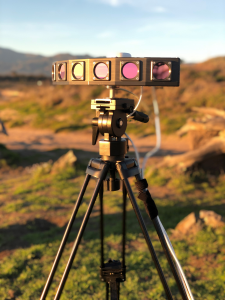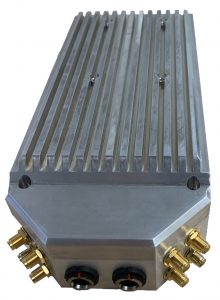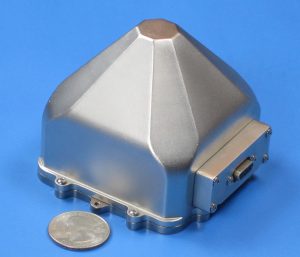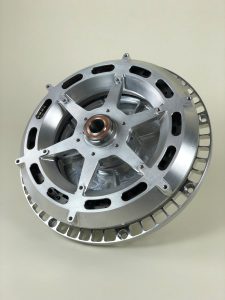Toyon Research Corporation is a nationally recognized small business providing innovative technical solutions and defense systems analysis since 1980. Toyon performs advanced technical research and development to support customer needs, including a history of successful small business innovation research (SBIR) projects. We leverage SBIR programs to move early-stage, cutting edge technologies into fully fledged products with successful commercial applicability.
SBIR SUCCESS POINTS:
- For every dollar invested in Toyon by the SBIR program, we have received an additional $2.26 in commercialization funds from other sources
- Participated in the SBIR program since 1986
- From 30 employees to 250 and growing!
- SBIR funding accounts for less than 17% of annual revenues
- Phase III SBIR projects (not funded by the SBIR program) account for greater than 57% of annual revenues
- Transitioned multiple SBIR projects from an initial concept (TRL1-2) to operational technology (TRL 7+)
- Toyon continues to innovate, generates ongoing employment opportunities, and supports important government programs thanks to the availability of SBIR programs
Toyon supports multiple commercial and government clients with solutions for their most challenging problems. These are some of our recent case studies:
VideoPlus
Originally developed with SBIR funding, the VideoPlus product line has been deployed at the US Southern and Northern borders and at allied nation borders (counter-ISIS operations). VideoPlus enhances very-long-range infrared and visible surveillance video to detect and track suspicious human movements and cue responses from border patrol personnel. Toyon has commercialized VideoPlus with > $10M in license sales and follow-on software integration contracts. VideoPlus has also been deployed for varied applications including commercial nuclear site security and has been adapted for drone video processing and autonomy support.

Applying techniques developed under SBIR efforts, Toyon developed the VPSS processing suite to support surveillance variants of a next generation light-armoured vehicle (LAV). The Toyon VPSS is deployed via LAV for operational use by multiple US-allied nations. The VPSS is an innovative software package that includes real-time, low-latency functionality: real-time imagery stabilization, automated moving target detection, real-time tracking, and other video enhancement algorithms, including multi-sensor fusion, image blending, and video transcoding. Toyon’s algorithms execute on military hardened computer hardware (using CPUs and GPUs) and interface with state-of-the-art, high definition imagers.

Overhead Persistent Infrared
(OPIR) algorithms, initially funded via the DOD SBIR program, have been demonstrated with the Space Based Infrared System, a missile warning system. Toyon’s algorithms process data to solve critical challenges for emerging threats including dim and highly maneuverable targets. Toyon’s OPIR algorithms are currently being transitioned to onboard space-based solutions for future proliferated satellite ISR platforms.

Maritime Infrared Camera
Toyon developed the Maritime Infrared Camera system for semi-automatically detecting whales on a NOAA SBIR program. The technology developed on this SBIR was used to estimate the abundance of gray whales migrating along the California coast, but deployment of the system led to other applications including supporting oil and gas exploration, military systems with active sonar, and the shipping industry. Oil and gas operations were supported in Canada, Asia, and most recently offshore in the Atlantic Ocean. To support these operations, we deployed a new ship-based infrared system that was developed using internal Toyon investment along with oil and gas industry funding. Total revenue from deployment of the system has exceeded $1.3M and is expected to grow in the coming years.

GPS-Denied Global Navigation System
Toyon developed a system for semi-automatically detecting whales on a NOAA SBIR program. The technology developed on this SBIR was used to estimate the abundance of gray whales migrating along the California coast, but deployment of the system led to other applications including supporting oil and gas exploration, military systems with active sonar, and the shipping industry. Oil and gas operations were supported in Canada, Asia, and most recently offshore in the Atlantic Ocean. To support these operations, we deployed a new ship-based infrared system that was developed using internal Toyon investment along with oil and gas industry funding. Total revenue from deployment of the system has exceeded $1.3M and is expected to grow in the coming years.

Inertial Navigation System
Under an Army SBIR Phase I, II, and III program, Toyon developed and produced the world’s first navigation-grade inertial measurement unit based on micro-electro-mechanical systems technology. Toyon designed and developed the electronics and software and invented advanced calibration and systems identification algorithms that allow the inertial sensor to self-calibrate in the field. Toyon is currently in the process of negotiating the licensing of the electronics, software, and algorithms for this technology with a major U.S. company (over $7B in annual revenues and a market value of over $92B on the NASDAQ). The very small size of the system, along with navigation-grade performance, makes it very attractive for virtually any platform and mission that requires an inertial sensor for navigation. Phase III funding received so far is in excess of $8M.

MAUI (Modular Autonomy Incubator)
Toyon’s MAUI, a scalable reinforcement learning framework that supports AI training within high-fidelity battlespace simulator, is the product of a recently completed Phase II SBIR program out of the Naval Air Warfare Center Aircraft Division. Moving into a $1 M Phase III, Toyon will be delivering a modeling and simulation environment and analysis toolbox to support testing and evaluation of the F/A-18 operational flight program.

Torque-Dense Electric Motor
Under an Army SBIR program, Toyon developed a revolutionary electric motor design that provides twice the torque density per pound than the state-of-the-art in current electric motor technology. This motor design will enable lighter-weight systems with more available power. This technology is directly relevant to electric cars and manned and unmanned airborne platforms. Toyon is seeking venture capital for this patent-pending technology that will be the basis of Toyon’s next spinoff in the near future.

Track-to-Track Fusion
Developed under a NAVIR SBIR program Toyon has developed algorithms and software for automating the process of fusing and analyzing data from surveillance and tracking systems. The algorithms, software, and analysis tools enhanced on the SBIR effort are currently being used by the Navy to support large surveillance and tracking programs. Phase III contracts derived from this topic exceed $20M in revenue.
